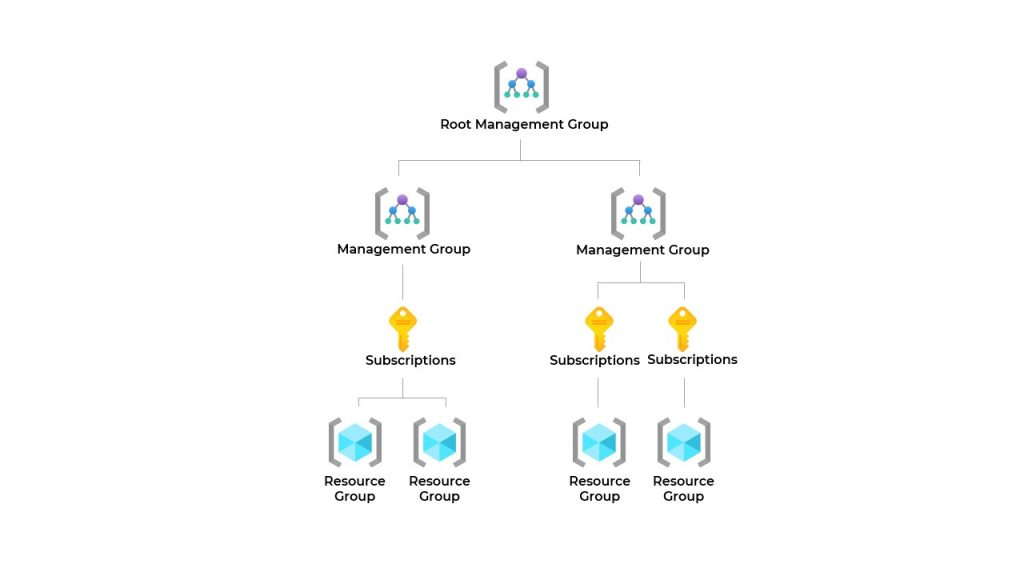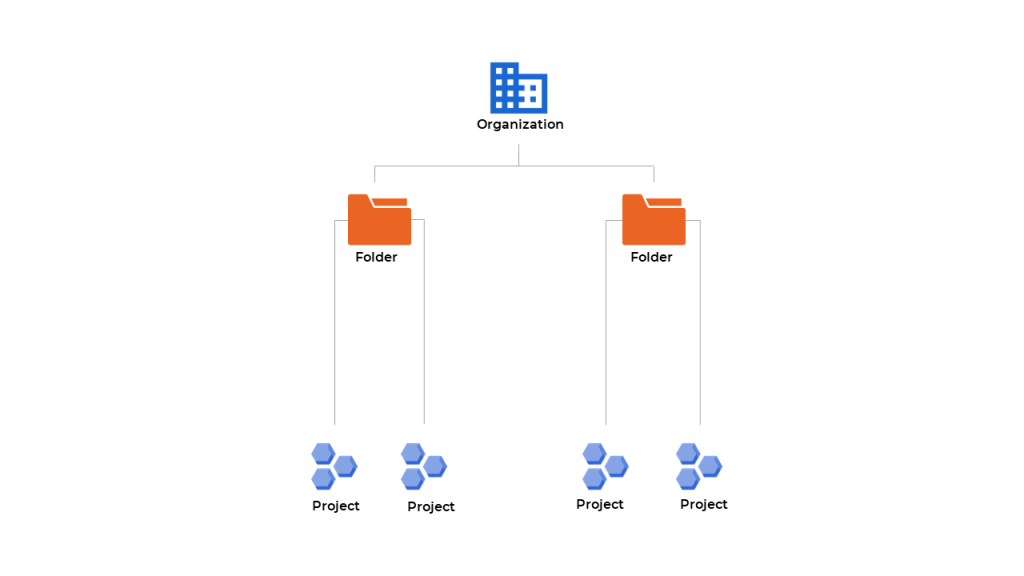Efficient resource organization is vital for effective cloud management which enables businesses to allocate costs, enhance security, and streamline operations. Each cloud provider offers its own resource hierarchy model, allowing users to organize and manage their resources effectively.
In this article, we will explore and compare the resource organization capabilities of the three major cloud providers: Amazon Web Services (AWS), Microsoft Azure, and Google Cloud Platform (GCP).
AWS Resource Organization
AWS Resource Hierarchy
AWS provides a comprehensive resource hierarchy with four levels: Organization root, Organizational Unit (OU), Account, and Resource. The Organization root is the top-level construct which allows users to consolidate multiple AWS accounts into a single entity. Organizational Units help to further organize accounts within the organization. AWS Service Control Policies (SCPs) are utilized to manage permissions within the organization unit. Resource Groups enable users to aggregate and manage resources based on tags or relationships.
AWS offers several tools and services to facilitate resource organization within their cloud environment. Let’s explore some of the key features of AWS resource organization.

AWS Organizations
AWS Organizations is an account management service that enables the consolidation of multiple AWS accounts into a single organization. It provides a centralized view and management of all accounts within the organization. With Organizations, new member accounts can be created, and existing accounts can be invited to join the organization. AWS Service Control Policies (SCPs) can be applied at the organization and an OU level to manage permissions across accounts. In addition to SCPs, Tag Policies can also be defined at OU level to standardize tags across AWS accounts.
Resource Groups
AWS Resource Groups allow users to aggregate and manage resources based on tags or relationships. These dynamic groups automatically update as new resources are added or removed. Resource Groups provide a convenient way to organize and manage resources based on specific criteria, such as applications, environments, or departments.
Resource Tagging
Tagging is a powerful feature in AWS that allows users to categorize and label resources for better organization and management. Tags are key-value pairs that can be assigned to resources, enabling effective cost allocation, resource tracking, and management. By utilizing consistent and meaningful tags, users can easily identify and manage resources based on their specific requirements.
Azure Resource Organization
Azure Resource Hierarchy
Azure follows a resource hierarchy model consisting of five levels: Root, Management Group, Subscription, Resource Group, and Resource. The Root level represents the top-level node, representing an organization. Management Groups provide a higher level of scope above subscriptions, allowing for the application of governance conditions. Subscriptions act as containers for resources, while Resource Groups facilitate the management and organization of resources based on their lifecycle or project. Azure Tags are utilized for efficient categorization and tracking of resources.
Azure provides a robust resource organization framework, allowing users to efficiently manage and organize their resources. Let’s explore the key aspects of Azure resource organization.

Management Groups and Subscriptions
Azure offers a hierarchical approach to resource organization, starting with Management Groups. Management Groups provide a level of scope above subscriptions, allowing governance conditions. Subscriptions act as containers for resources and can be organized into management groups. Policies and permissions assigned to a management group automatically apply to all subscriptions within that group.
Resource Groups
Azure Resource Groups provide a way to manage and organize resources based on their lifecycle or project. Resources within a resource group share the same lifecycle, permissions, and policies. Azure Policy is used to enforce organizational standards and compliance within the Azure environment. By grouping resources within a resource group, users can easily manage and apply policies to specific sets of resources.
Azure Tags
Azure Tags are metadata elements that can be applied to resources for efficient categorization and organization. They are key-value pairs that help users identify resources based on settings that are relevant to their organization. Tags are valuable for tracking costs, implementing policies, and organizing resources based on specific criteria or attributes.
GCP Resource Organization
GCP Resource Hierarchy
GCP implements a hierarchical resource organization, starting from the Organization node down to Folders, Projects, and Resources. The Organization level represents an organization and enables central control and access management for all projects. Folders can be used to further group projects based on an organizational or project structure. Projects act as containers for resources, and Labels are utilized for efficient categorization and organization.
GCP offers a hierarchical resource organization model, providing users with effective control and management capabilities. Let’s explore the key components of GCP resource organization.

Organization and Folder Structure
In GCP, the Organization level represents the root node of the resource hierarchy and is optional for GCP accounts. When an organization resource exists, projects are owned by the organization, ensuring central control and management of all projects. Folder resources can be used to further group projects based on organizational or project structure. Departments, teams, and products can be hierarchically modeled using folders, enabling efficient organization and access management.
Project Resource
Projects in GCP act as containers for all Google Cloud services and resources. When creating a new resource, it is always associated with a project. Projects owned by the organization or folder follow the lifecycle and management settings of the parent entity. Cloud IAM policies can be set at any resource level, and resources inherit policies from the parent nodes. Labels can be applied to resources for effective categorization and organization.
Best Practices for Resource Organization
To ensure efficient resource organization across AWS, Azure, and GCP, it is important to follow best practices tailored to each cloud provider. Here are some key recommendations:
Establish a Strong Foundation in Cloud
Choosing the right cloud provider and understanding your organization’s needs are essential for resource organization. Ensure proper security measures and cost management strategies are in place. A modular and scalable configuration will allow for future growth and align with business goals.
Consistent Tagging Strategy
Maintain a consistent tagging strategy across all cloud providers to ensure uniform resource organization and tracking. Design meaningful and standardized tags that align with your organization’s requirements and processes.
Automation and Infrastructure as Code (IaC)
Leverage automation tools and Infrastructure as Code (IaC) practices to provision and manage resources consistently. Automation reduces manual errors and ensures the reproducibility of resource organization.
Regular Audits and Optimization
Conduct regular audits of resource organization to ensure alignment with business goals and optimize resource usage and costs. Keep track of changing requirements and adjust resource organization accordingly.
By following these best practices specific to each cloud provider, organizations can achieve effective resource organization, leading to improved operational efficiency and cost-effectiveness.
To Conclude
Resource organization is a crucial aspect of cloud computing. AWS, Azure, and GCP offer comprehensive resource hierarchy models and tools to facilitate efficient resource organization. By understanding the capabilities of each cloud provider and implementing best practices, organizations can optimize costs, enhance security, and streamline operations in their cloud environments.


















